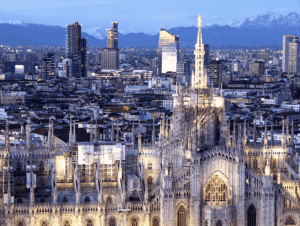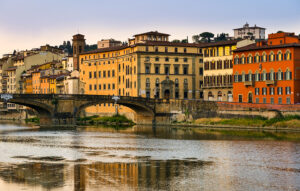Tuscany Leads the Growth
Tuscany stands as the absolute protagonist of a phenomenon reshaping the Italian real estate market: the appreciation of premium wine-producing areas. With property price increases reaching +162%, the region represents a perfect model of how wine excellence and landscape beauty can transform a territory. From the historic Chianti, a wine tourism destination for over a century, to the emerging Maremma, passing through the prestigious Brunello di Montalcino and the highly sought-after Bolgheri, Tuscany offers a range of appellations attracting international investors and quality-of-life seekers. Brunello di Montalcino and Bolgheri vineyards reach values up to one million euros per hectare, demonstrating this market’s solidity. Tuscan quality of life perfectly intertwines with wine quality: restored medieval villages, protected landscapes, modern infrastructure, and unparalleled cultural heritage. This combination attracts not only tourists but also those seeking a primary or secondary residence immersed in beauty and authenticity.
A Growing National Phenomenon
Over the past decade, according to Il Sole 24 Ore, residential prices and transactions in premium wine-producing locations have increased by an average of 82.4%, significantly outperforming the national average. “Our research shows that wine quality and quality of life are creating a new market niche destined to last,” emphasizes Mario Breglia, president of Scenari Immobiliari. The phenomenon primarily involves Piedmont, Tuscany, and Veneto, but extends to Sardinia and Sicily as well. Sardinia registers increases up to +200%, while Piedmont reaches +142%. According to Alberto Vigada, Consumer Goods & Retail Leader at PwC Strategy & Italy, “investors focus on prestigious and limited appellations for long-term speculation, despite the global decline in wine consumption.”
Highest Growth Areas
CREA data highlights areas with exceptional performance:
- Chambave (Aosta Valley): +13%, up to €170,000/hectare
- Etna DOC and Rosso di Montalcino: about 200,000 €/hectare
- Brunello di Montalcino and Bolgheri: up to €1 million/hectare
- Barolo, with the prestigious Cannubi area: up to €4 million/hectare
Rapidly developing wine tourism generates significant flows toward renowned wineries, supporting territorial marketing and valorizing intact villages with well-maintained real estate and good infrastructur
The Importance of Landscape and Sustainability.
Landscape beauty and biodiversity are increasingly decisive factors in land valuation. Sustainable practices, including organic and biodynamic methods, add significant value. Tourist attractiveness has grown further since the vineyard landscapes of Langhe, Roero and Monferrato, and the Prosecco Hills of Conegliano and Valdobbiadene became UNESCO sites.
Art and Wine: The Contemporary Method Project
Sustainability, landscape, and art merge in Metodo Contemporaneo, the first scientific observatory by the University of Verona mapping 60 Italian realities investing in the relationship between art, wine landscapes, and communities through permanent collections, artist residencies, and site-specific installations. Among excellent examples, La Raia in Novi Ligure has worked for over 20 years on the combination of viticulture and biodiversity. “We made a pact with this Gavi territory: to return it to future generations more fertile and with greater biodiversity,” explains Piero Rossi Cairo. In 2013, the La Raia Foundation involved artists, philosophers, and architects to enhance the territory.
The Ceretto Family Story in Langhe
In Barolo lands, the Ceretto family represents an example of excellence and continuity. Founded in 1937 by Riccardo Ceretto and developed by his sons Bruno and Marcello, the estate now extends over 180 hectares with attached woods and hazelnut groves.
“For 30 years we’ve been restoring farmhouses and cottages on our lands for our collaborators, over 40 homes,” recounts Roberta Ceretto, company president. “A hectare of Barolo in the best terroirs now costs almost four million euros, and there are no lands for sale. Barolo is a very small area, about 2,000 total hectares.”
The family has opened new frontiers in Alta Langa with the Monsignore winery in Vicoforte, at 600 meters altitude. The connection with the territory also passes through the three-Michelin-star restaurant Piazza Duomo, where chef Enrico Crippa celebrates the territory with ingredients from the three-hectare garden at Tenuta Monsordo Bernardina, and through artistic projects like the colorful Chapel by Sol LeWitt and David Tremlett.
Interested in exploring investment opportunities in Italy’s premium wine regions? Columbus International bridges Italian and US markets with offices strategically located in New York, Miami, Milan, and Tuscany. Our expertise in both markets allows us to guide international clients through the unique opportunities offered by Italy’s most prestigious wine territories. Contact us to discover how we can help you find your perfect property in these extraordinary landscapes where wine excellence meets exceptional quality of life.
Source: Il Sole 24 Ore



